
According to the CDC, about 61 million adults in the U.S. live with a physical or mental disability. That’s just over a quarter of the adult population — and about 40% of those aged 65 or more. In addition, the U.S. Census Bureau pegs the number of children living with disabilities at more than three million, or 4.3% of the population under 18. (Rates are significantly higher for American Indian, Alaska Native, Black, and mixed race children.)
Disability rights have come a long way in the United States over the past 200 years. In the 1800s, when the country’s first school for the deaf was established and Braille was invented, people with disabilities were generally marginalized and often mocked or pitied, and considered unable to contribute to society.
Things began to change after World War I, when an estimated 200,000 veterans returned home with physical or mental disabilities, including lost limbs and “shell shock” or “war neurosis” (what we would call PTSD today). A former infantry officer named Robert S. Mark founded Disabled Veterans of the World War in 1920, and the DAV joined with the American Legion to lobby for government assistance for the disabled. (Today, these are the most popular veterans’ benefits in every state.)
The election of Franklin D. Roosevelt, our first (and thus far only) disabled president, in 1932 was another important milestone. Just a few years later, the League of the Physically Handicapped successfully protested against employment discrimination in (ironically) Roosevelt’s WPA. (These are labor laws your boss doesn’t want you to know about.)
Click here to see 26 landmark moments for disability rights in America
In more recent times, the Americans With Disabilities Act of 1990 and an amendment to the act passed in 2008 were landmarks in the movement for disabled rights. 24/7 Wall Street has created a timeline of some of the more significant moments in the movement by reviewing historical accounts of major pertinent events on numerous websites, including those of the Anti-Defamation League, the Library of Congress, and Temple University.
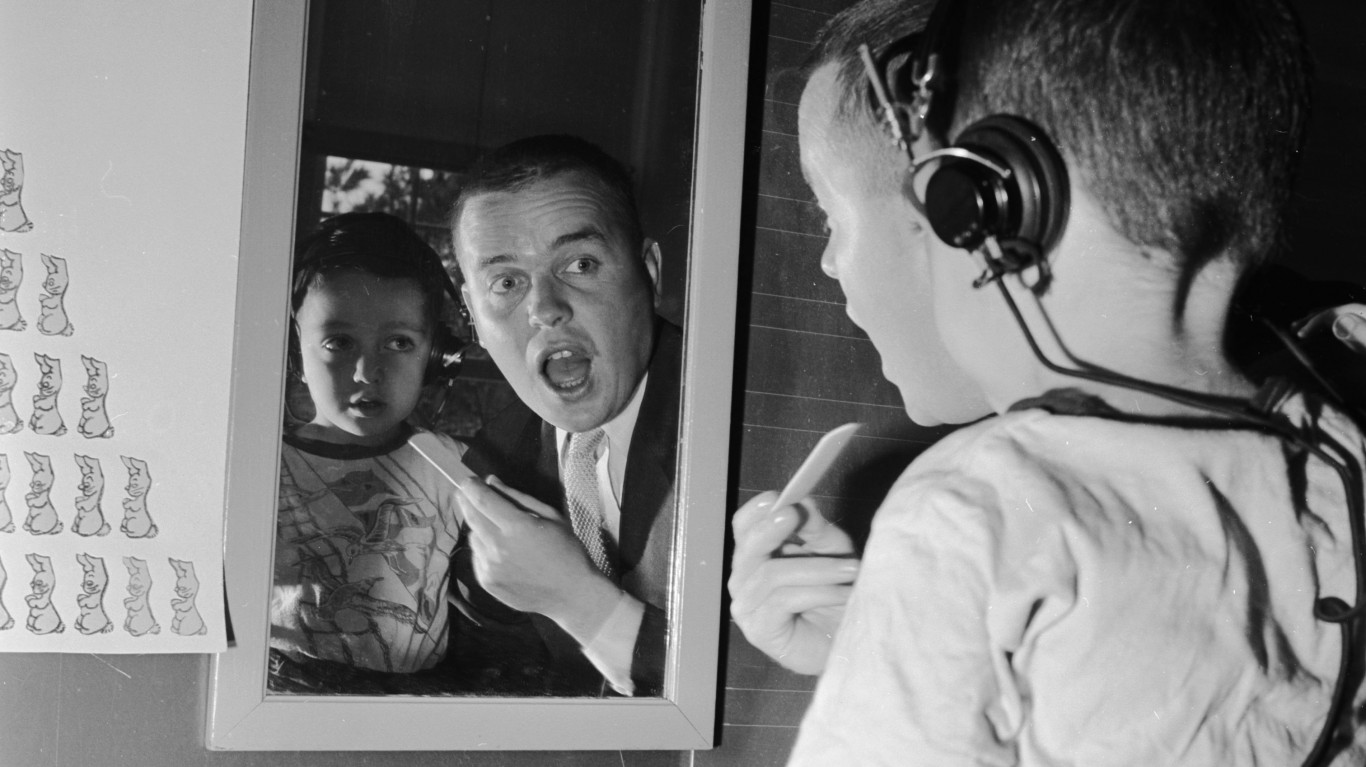
1815: First deaf educational institution founded
The American school for the deaf was founded by William Bolling of Goochland, Virginia. It lasted only one year, from 1815 to 1816. However, shortly thereafter, in 1817, the American School of the Deaf was founded. It still stands today.
[in-text-ad]

1829: Raised Point Alphabet invented
Created by a blind French man named Louis Braille, the tactile alphabet allowed the blind to read and write, making it possible for them to receive an education alongside the sighted. Though it was first developed in 1824, but system wasn’t completed until 1829.
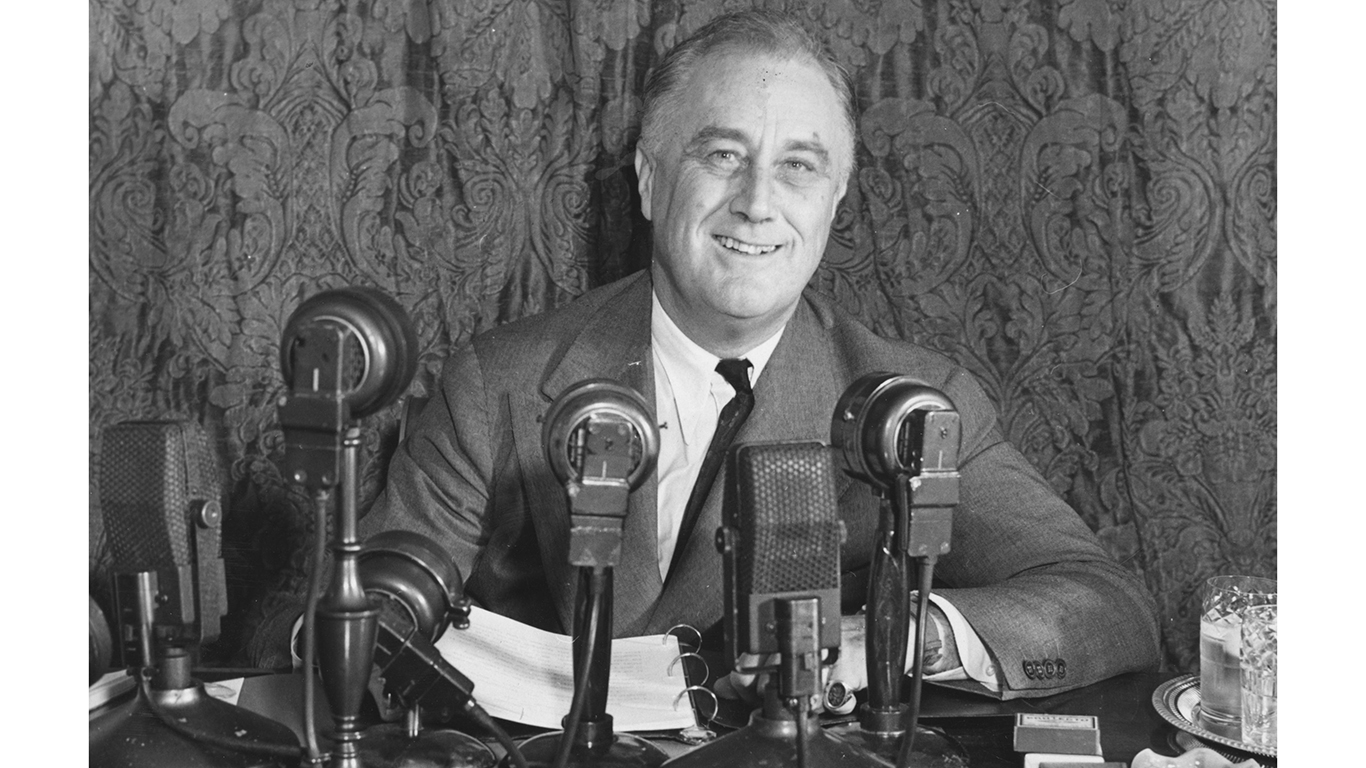
1932: FDR becomes first disabled president
To this day, Franklin D. Roosevelt has been the only disabled U.S. president. He had been paralyzed from the waist down in 1921 after contracting what was thought to be polio (though more recent research suggests that it might have been Guillain-Barré syndrome). Though his condition was well-known, he took care to seldom appear in public or in photographs in his wheelchair to avoid calling attention to his disability. During his presidency, the White House installed wheelchair-friendly ramps that still exist to this day.
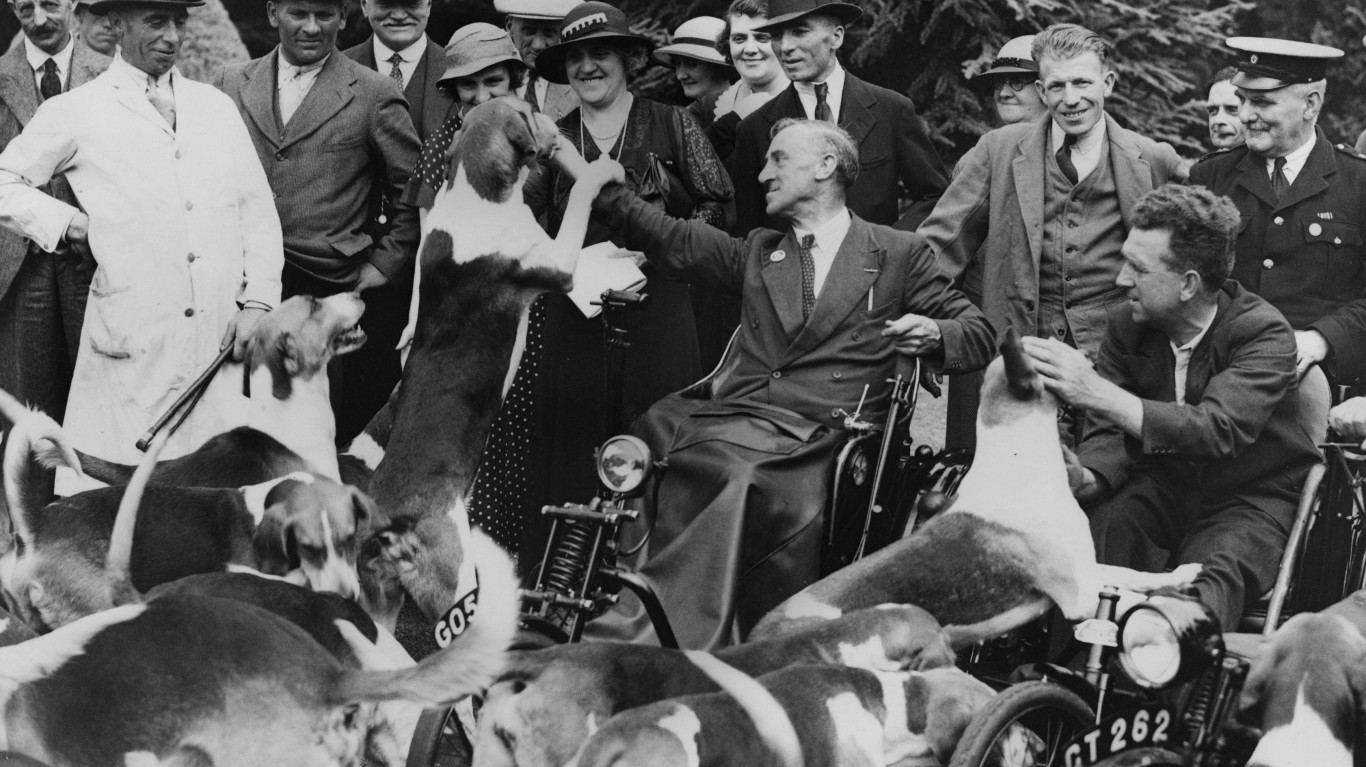
1935: League of the Physically Handicapped founded
This disability rights organization was established to protest discrimination against the disabled by the Works Progress Administration, which deemed them unemployable. Members of the league held sit-ins to protest, with the result that some 1,500 jobs for physically handicapped workers were created in New York City.
[in-text-ad-2]

1935: Social Security Act passed
The Social Security Act established a financial system for those 65 and older to continue earning some type of income after retirement. The system, which is still in use today, also set up unemployment insurance and welfare programs that can aid the disabled.
1940: National Federation of the Blind Founded
Still going strong, the National Federation of the Blind is the oldest and largest organization of its kind. The Federation coordinates programs, services, and resources to defend the rights of the blind.
[in-text-ad]

1946: National Mental Health Act
During the mid-1940s, many veterans suffered from mental illnesses due to the trauma of war. The act established the National Institute of Mental Health and is credited with spurring the development of new methods of treating mental health issues.

1947: Harold Russell wins an Oscar
Russell was a World War II veteran who lost his hands while serving. After being cast in the 1946 drama “The Best Years of Our Lives,” he earned a Best Supporting Actor Oscar for his role and also a special Oscar for ”bringing aid and comfort to disabled veterans through the medium of motion pictures.” He was both the first disabled person and the first non-professional actor to win an Academy Award.

1950: National Barrier-Free Standards are enacted
In 1950, several groups, including the U.S. Veterans Administration, the President’s Committee on Employment of the Handicapped, and the National Easter Seals Foundation collaborated to develop national barrier-free standards. This development raised public awareness of disability rights and led eventually to laws mandating accessibility requirements.
[in-text-ad-2]

1954: Brown v Board of Education
Though it is remembered primarily for ruling that racial segregation in public schools is unlawful, this landmark Supreme Court also paved the way for the Individuals with Disabilities Education Act, requiring that children with disabilities receive free public education.
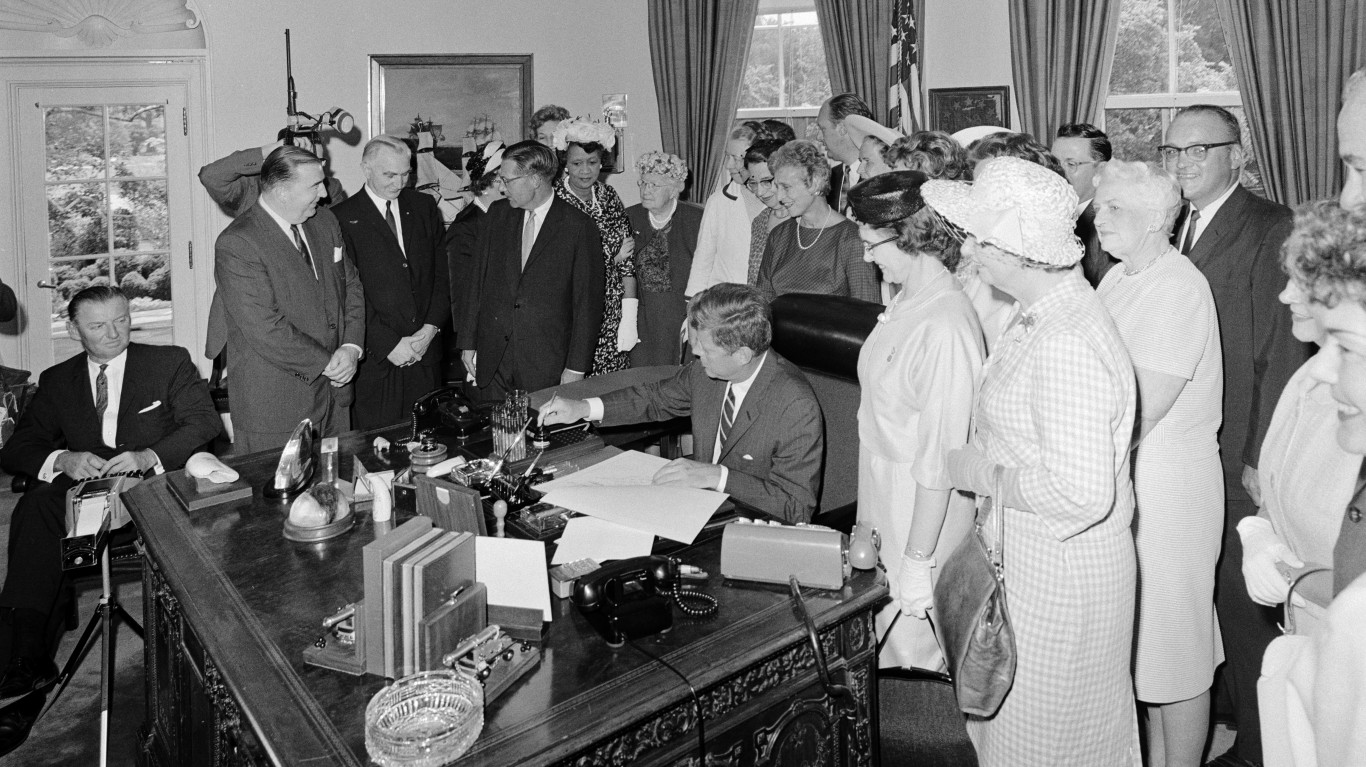
1963: Community Mental Health Act
Signed by John F. Kennedy, this act focused on transforming how the medical community addressed mental health issues by providing government financing for mental health facilities and research. It is considered to have been a mixed blessing, because while it encouraged deinstitutionalization to the benefit of many, it also left others adrift in communities that had limited abilities to help them.
[in-text-ad]

1968: Architectural Barriers Act
This established the law that all federal buildings and facilities had to be designed to be accessible. It also applied to non-government facilities that receive federal funding, including everything from office buildings and prisons to national parks and mass transit systems.

1972: Willowbrook State School exposed
This state-supported institution on Staten Island housed as many as 6,000 children with developmental disabilities. Reporter Geraldo Rivera did an expose on its poor conditions in 1972, focusing attention on the school. Eventually, in 1987, it was closed and criticism of the facility led to new legislation protecting those with disabilities.
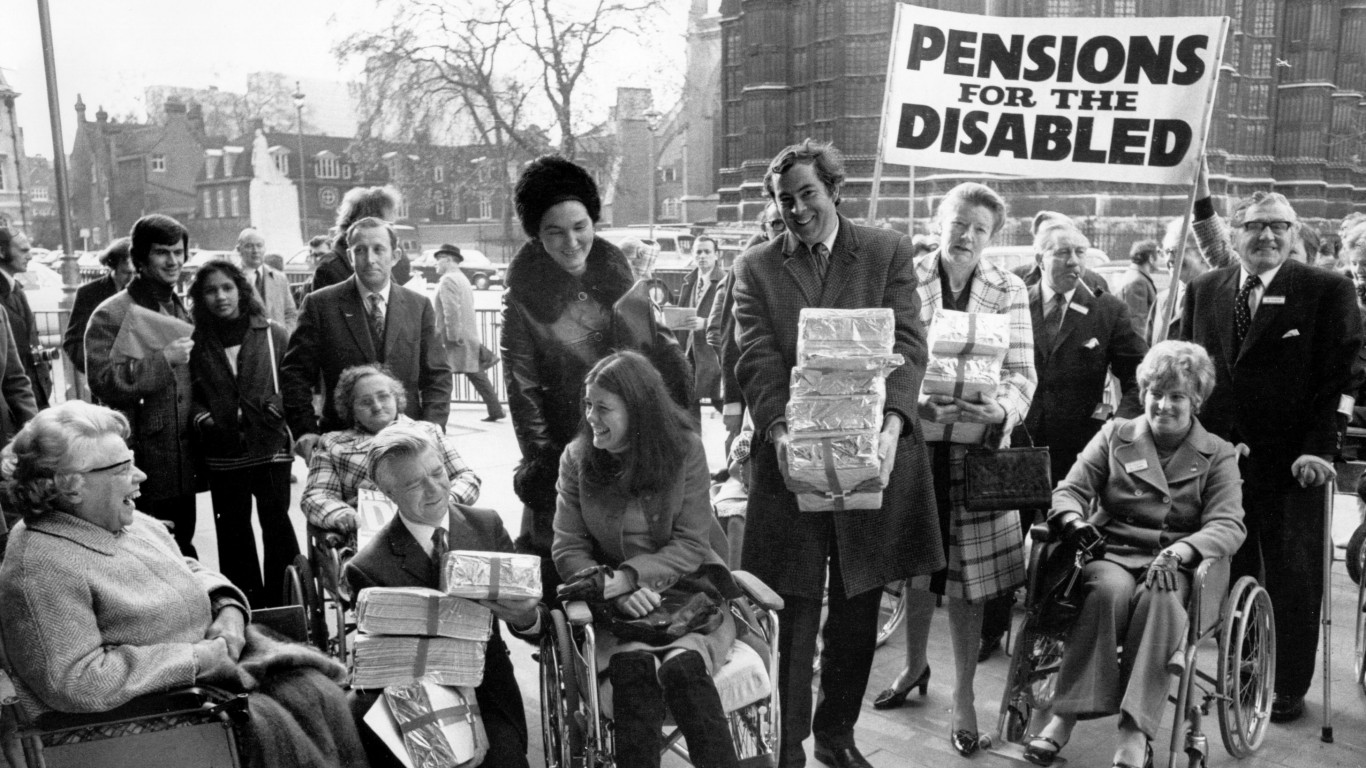
1973: Rehabilitation Act of 1973 passed
This act replaced earlier laws addressing the rights of the disabled. Among other things, it established an affirmative action program for federal employment of the disabled and prohibited discrimination against them by government contractors.
[in-text-ad-2]
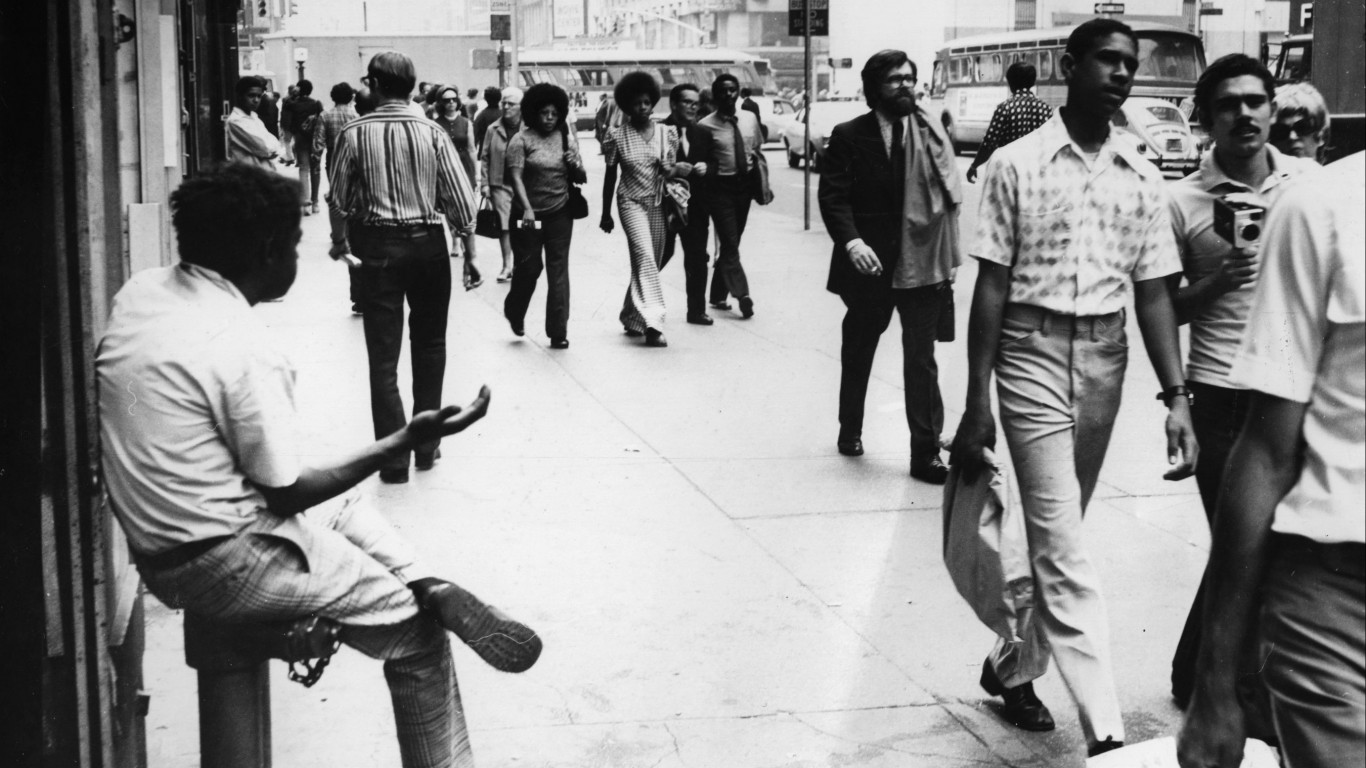
1974: Last “Ugly Law” is repealed
Chicago was the last city to repeal its “ugly law” after 93 years enact. This law had prohibited those with deformities, disabilities, and diseases from appearing in public, even criminalizing those who did.

1975: Individuals with Disabilities Education Act
This federal law was originally known as the Education of Handicapped Children until the name changed in 1990. It supports special education access to children and youth with varying disabilities.
[in-text-ad]

1977: Section 504 sit-ins
During these nationwide sit-ins, disabled groups occupied federal buildings in order to protest the delayed implementation of the Rehabilitation Act of 1973. At the time, the Capitol, among other federal facilities, remained inaccessible for those using wheelchairs. The sit-in began April 5 and was resolved on April 28, when regulations addressing the protestors’ concerns were signed into law.

1978: ADAPT protests
American Disabled for Attendant Programs Today, known as ADAPT, protested wheelchair inaccessibility in Denver, advocating for accessibility in public buses. The grassroots organization now has chapters in 30 states and the District of Columbia.

1984: Voting Accessibility for the Elderly and Handicapped Act
This law mandated accessibility for those who are disabled in various ways or need extra assistance in voting. Provisions include the printing of ballots with large fonts and telecommunication devices for those hard of hearing.
[in-text-ad-2]

1984: Baby Doe Amendment
This amended the 1974 Child Abuse Prevention and Treatment Act, and added protections for disabled newborns. This amendment came after the parents of a “Baby Doe” born in Indiana refused to permit surgery for a birth defect because the infant had Down Syndrome. A juvenile court ruled in favor of the parents, and the Indiana Supreme Court refused to hear the case. This and a similar later case in New York State led to the passage of this amendment offering various provisions to protect babies in these circumstances in the future.

1988: Fair Housing Act
The Fair Housing Act made it illegal to discriminate against housing applications based on race, religion, those with disabilities, and even families with children. This amended the Civil Rights Act of 1968.
[in-text-ad]
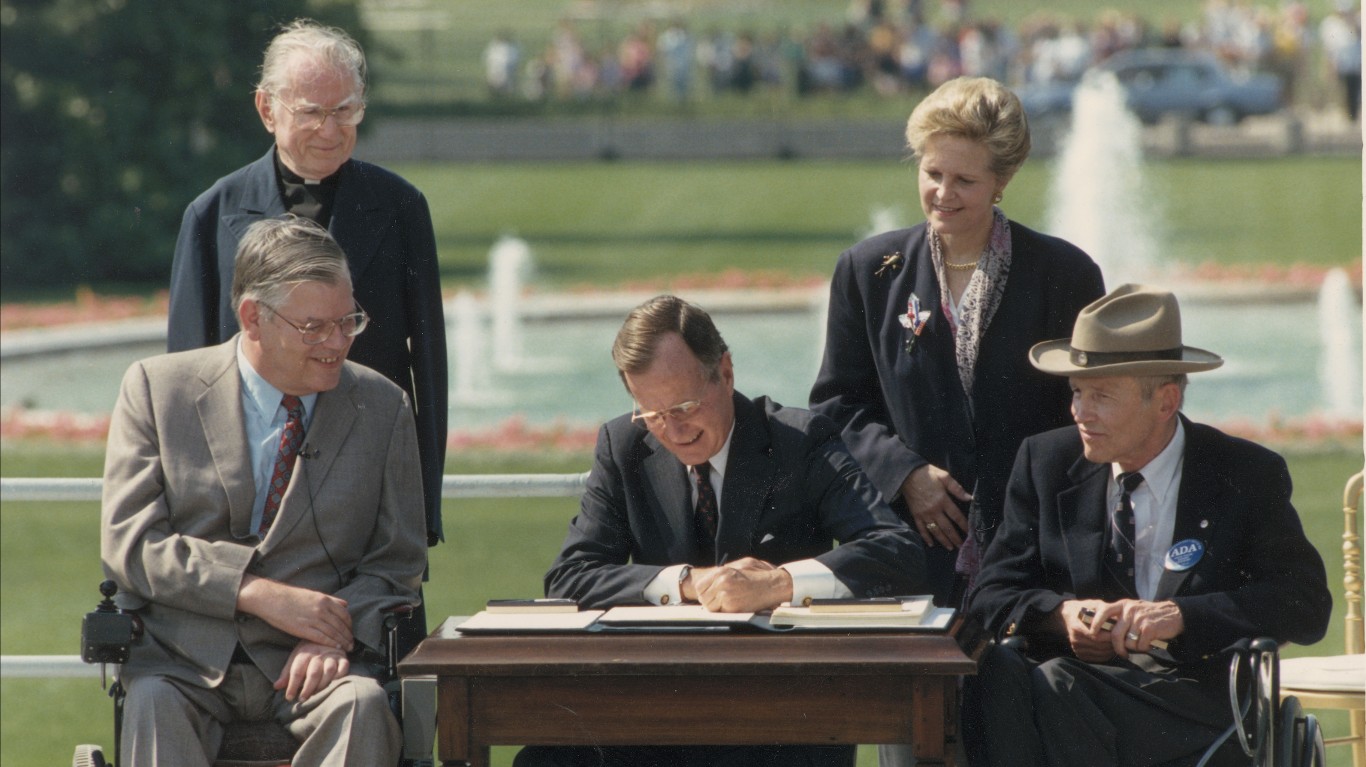
1990: Americans with Disabilities Act passed
This landmark civil rights law prohibits discrimination against those with both physical and mental disabilities in a wide range of categories, including employment, education, and accessibility to public spaces.

1990: The Capitol Crawl
This protest was meant to demonstrate the struggles that disabled folks face daily. More than 1,000 protesters showed up in support as members of ADAPT threw themselves out of their chairs, and “crawled” up the steps of the Capitol building.

1999: Olmstead v. L.C.
This case offered protections to those with mental illness, giving them the right to live the community instead of an institution. The court deemed mental illness as a disability and outlawed the unjustified isolation of these individuals. This decision came after two women who were diagnosed with schizophrenia and personality disorder sued the state of Georgia.
[in-text-ad-2]

2008: ADA Amendments Act
George W. Bush signed this amendment, which revised the Americans with Disabilities Act of 1990. This broadened the term “disability,” with the intention to prevent discrimination against a wider range of people.

2016: Tammy Duckworth elected
Illinois Democrat Tammy Duckworth, a double amputee, served in the House of Representatives from 2013 to 2017 and has been her home state’s junior senator since then. She was a combat veteran and helicopter pilot in the Iraq war, where she lost both her legs to an Iraqi grenade. Despite her injuries, she continued to serve and became a lieutenant colonel. She is the first disabled woman — and also the first Thai-American — elected to Congress.
Are You Still Paying With a Debit Card?
The average American spends $17,274 on debit cards a year, and it’s a HUGE mistake. First, debit cards don’t have the same fraud protections as credit cards. Once your money is gone, it’s gone. But more importantly you can actually get something back from this spending every time you swipe.
Issuers are handing out wild bonuses right now. With some you can earn up to 5% back on every purchase. That’s like getting a 5% discount on everything you buy!
Our top pick is kind of hard to imagine. Not only does it pay up to 5% back, it also includes a $200 cash back reward in the first six months, a 0% intro APR, and…. $0 annual fee. It’s quite literally free money for any one that uses a card regularly. Click here to learn more!
Flywheel Publishing has partnered with CardRatings to provide coverage of credit card products. Flywheel Publishing and CardRatings may receive a commission from card issuers.
Thank you for reading! Have some feedback for us?
Contact the 24/7 Wall St. editorial team.
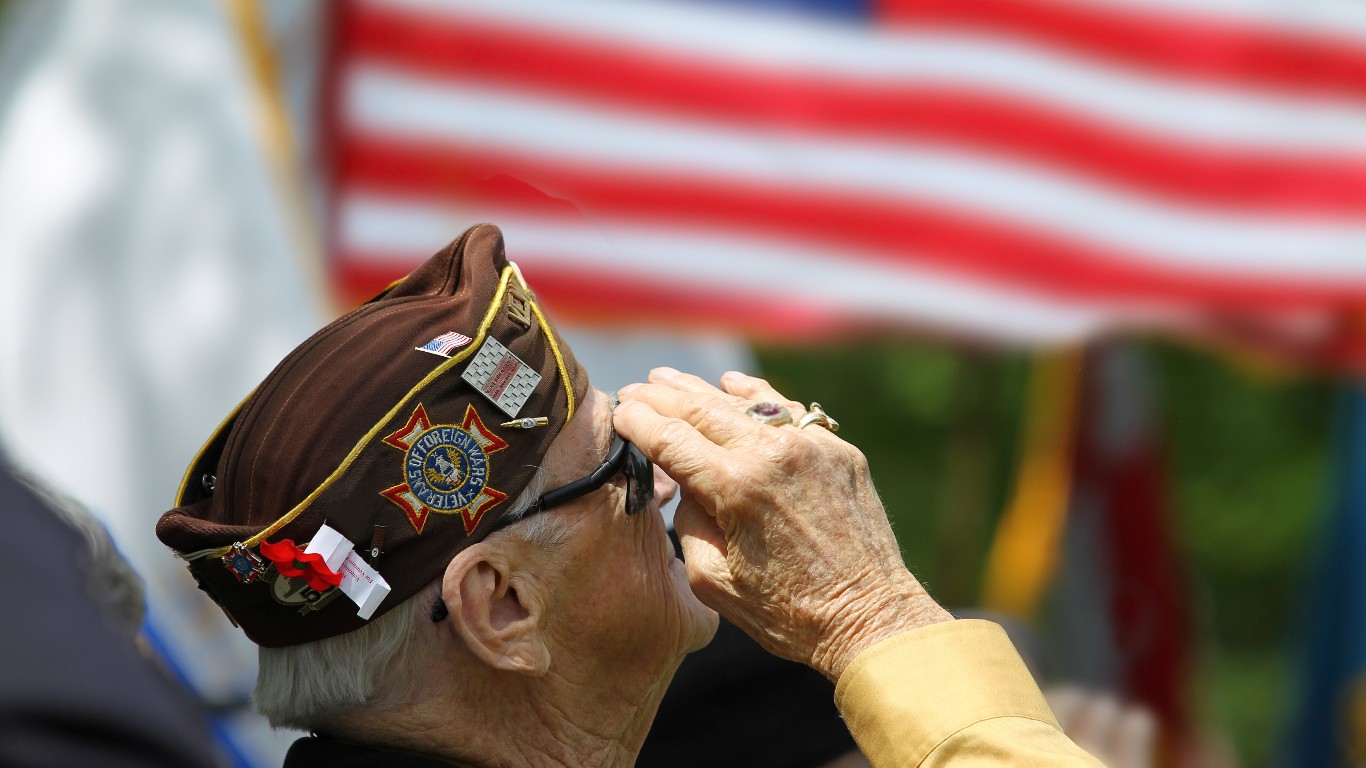 24/7 Wall St.
24/7 Wall St.
 24/7 Wall St.
24/7 Wall St. 24/7 Wall St.
24/7 Wall St.